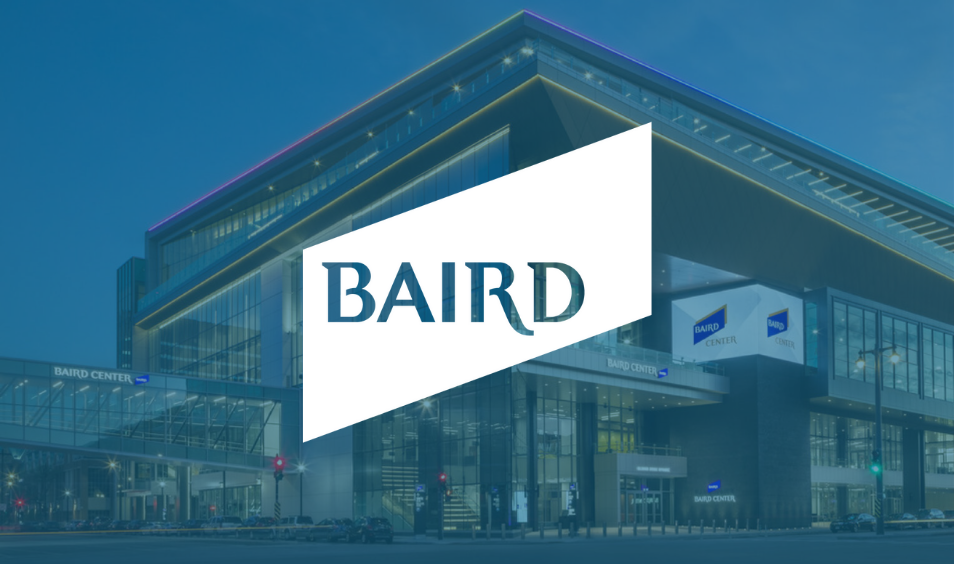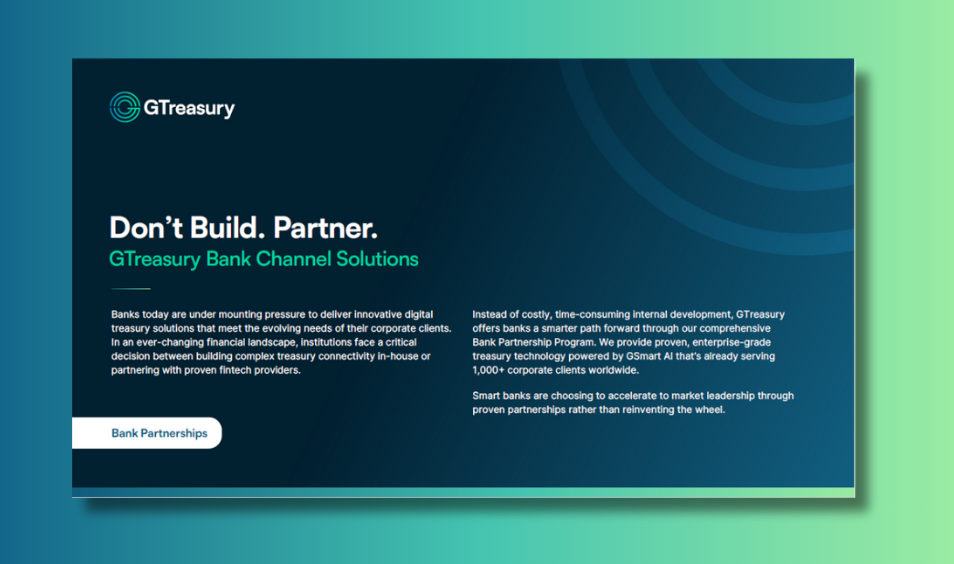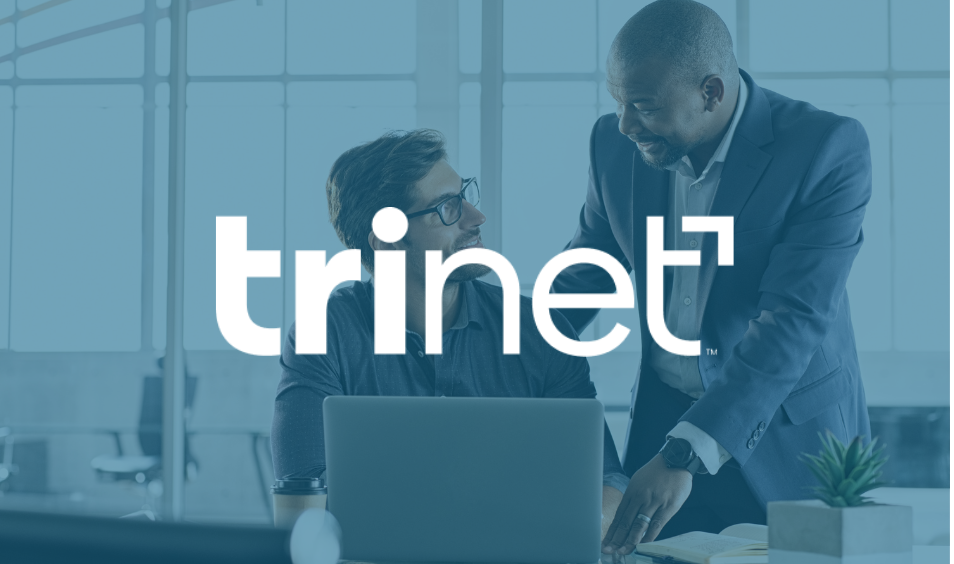Beyond the Buzzwords: A Corporate Treasurer's Guide to Digital Asset Infrastructure


If you're a CFO or Treasurer, you've likely been bombarded with cryptocurrency terminology, blockchain whitepapers, and promises of revolutionary change. Yet beneath the hype lies a fundamental question: What does digital asset infrastructure actually mean for my treasury operations, and when should I care?
At Ripple and GTreasury, we've spent years building and operating digital payment infrastructure for 300+ financial institutions globally. We've moved real money, met real compliance requirements, and solved real treasury problems. This practical guide will help you understand digital asset infrastructure through the lens that matters most: How can this improve my liquidity management, reduce costs, and prepare my organization for the future?
Part 1: Understanding the Building Blocks
Blockchain: The Infrastructure Layer
What it actually is: A distributed ledger technology that records transactions across multiple computers in a way that makes the records immutable and transparent.
Why treasurers should care: Blockchain enables 24/7/365 settlement, eliminates multiple intermediaries in cross-border transactions, and provides real-time transparency into payment status. Unlike traditional banking rails that operate during business hours and require 2-3 days for settlement, blockchain-based payments settle in seconds, any time of day.
Real-world treasury impact:
- Trapped liquidity reduction: Faster settlement means less cash tied up in transit
- Working capital optimization: Same-day international payments to suppliers
- After-hours capability: Execute urgent payments outside banking hours
- Reconciliation efficiency: Real-time transaction visibility reduces manual reconciliation work
Stablecoins: The Treasury-Relevant Innovation
What they are: Digital currencies designed to maintain a stable value, typically pegged 1:1 to a fiat currency like the U.S. dollar.
How they maintain stability:
- Fiat-collateralized: Backed by reserves of actual currency (e.g., USDC, USDT)
- Crypto-collateralized: Backed by other cryptocurrencies with over-collateralization
- Algorithmic: Use smart contracts to manage supply and demand
Why they matter for treasury: Stablecoins combine the efficiency of blockchain settlement with the stability of fiat currency.
This makes them practical for:
- Cross-border payments: Move USD-equivalent value globally in minutes, not days
- 24/7 settlement: Execute payments outside traditional banking hours
- Reduced FX exposure: Maintain dollar-denominated value without conversion delays
- Lower transaction costs: Eliminate multiple correspondent bank fees
Smart Contracts: Automation Infrastructure
What they are: Self-executing contracts with terms written directly into code. When predetermined conditions are met, the contract automatically executes.
Treasury applications:
- Automated payments: Release supplier payments automatically upon delivery confirmation
- Conditional FX hedging: Execute hedges when rates hit predetermined thresholds
- Programmable escrow: Hold funds until multiple parties confirm conditions are met
- Auto-reconciliation: Match payments to invoices and update records automatically
Part 2: Practical Applications for Corporate Treasury
Cross-Border Payments Optimization
The Problem: Traditional cross-border payments involve multiple correspondent banks, take 3-5 days, cost 3-7% in fees, and lack transparency.
Digital Asset Solution:
- Use stablecoin or blockchain-based payment rails
- Settlement in minutes instead of days
- Costs reduced by 60-90%
- Real-time tracking and confirmation
Real example: A U.S. technology company now settles Asian supplier payments same-day using stablecoin rails, reducing FX exposure windows from 3-5 days to hours and cutting payment costs by 70%.
Treasury Operations During Non-Banking Hours
The Problem: Traditional banking operates business hours only. Urgent needs during evenings, weekends, or holidays require expensive wire services or wait until Monday.
Digital Asset Solution:
- 24/7/365 settlement capability
- Execute urgent payments any time
- Maintain business continuity across time zones
- Respond to market opportunities outside banking hours
Working Capital and Trapped Liquidity Optimization
The Problem: Traditional payment settlement ties up significant working capital. Money "in flight" for 2-5 days represents trapped liquidity that can't be deployed.
Digital Asset Solution:
- Near-instant settlement frees trapped capital
- Reduced need for correspondent bank account funding
- Lower safety stock requirements for international payments
- Improved cash forecasting accuracy
Treasury impact: A Fortune 500 company reduced trapped liquidity by $2.3 million by shifting 40% of international payments to instant settlement rails, redeploying that capital into higher-yield investments.
Part 3: Evaluating Readiness and Risk
When Digital Asset Infrastructure Makes Sense
Strong candidates:
- High cross-border payment volumes (>$10M monthly)
- Expensive payment corridors (Latin America, Africa, Southeast Asia)
- Time-sensitive operations requiring 24/7 capability
- Trapped liquidity concerns from slow settlement
- Forward-thinking treasury teams preparing for industry evolution
Consider waiting:
- Limited international operations (mostly domestic)
- Low payment volumes with simple requirements
- Highly regulated industries awaiting clear guidance
- Treasury teams lacking bandwidth for new initiatives
Implementation Approach: Crawl, Walk, Run
Phase 1: Education and Pilot (Months 1-3)
- Team education on digital asset infrastructure
- Identify 1-2 specific use cases (high-cost corridors)
- Execute small pilot transactions (<$100K)
- Measure cost savings, settlement time, and process efficiency
Phase 2: Controlled Expansion (Months 4-9)
- Scale successful use cases to meaningful volumes
- Add 2-3 additional corridors or applications
- Integrate with treasury management systems
- Develop internal policies and procedures
Phase 3: Strategic Integration (Months 10-18)
- Full integration into treasury operations
- Multi-rail payment optimization
- Explore advanced applications (smart contracts, automated treasury)
- Position organization as digital treasury leader
Part 4: The Ripple and GTreasury Advantage
Why Infrastructure Expertise Matters
Understanding terminology is one thing. Building and operating production infrastructure that moves billions in real money is entirely different. Here's what sets Ripple and GTreasury apart:
Proven Global Infrastructure:
- 300+ financial institutions using Ripple's network in production
- Billions in cross-border payments processed
- 90+ market coverage with instant settlement capability
- Battle-tested compliance, security, and scalability
40 Years of Treasury Expertise:
- GTreasury's exclusive focus on corporate treasury since founding
- Deep understanding of treasury workflows, pain points, and requirements
- Enterprise-grade solutions trusted by global organizations
- Customer-driven innovation based on real treasury needs
Production Experience, Not Theory:
- Real banks moving real money on our infrastructure
- Documented cost savings of 60-90% in specific corridors
- Settlement times reduced from days to seconds
- Regulatory compliance in multiple jurisdictions
What This Means for Your Treasury
- You're not learning from vendors who just added blockchain as a checkbox feature. You're working with a team that built and operates the infrastructure that financial institutions use every day.
- You're not forced onto proprietary rails or specific partners. You maintain complete flexibility to use traditional or digital rails based on what makes sense for each transaction.
- You're not betting on unproven technology. You're accessing production infrastructure that has processed billions in real payments with measurable results.
- You're not disrupting your operations. You're adding capabilities when your business case justifies it, at your pace.
Part 5: Questions CFOs and Treasurers Should Ask
When evaluating digital asset infrastructure capabilities from any vendor, ask these critical questions:
About Infrastructure Experience
- Production Scale: How many financial institutions use your infrastructure in production today?
- Transaction Volume: How much value moves through your network monthly?
- Geographic Coverage: Which markets can you reach with instant settlement?
- Uptime and Reliability: What is your infrastructure's uptime track record?
About Practical Implementation
- Integration Approach: How does this integrate with my existing treasury systems?
- Implementation Timeline: What's realistic for pilot to production?
- Team Requirements: What resources do I need internally?
- Ongoing Support: What does your support model look like?
If a vendor can't answer these questions with specifics, they're offering theory, not capability.
Conclusion: From Buzzwords to Business Value
Digital asset infrastructure is no longer theoretical. It's processing billions in payments, reducing costs by 60-90% in specific corridors, and enabling treasury capabilities that were impossible five years ago.
But success requires more than understanding terminology, including:
- Proven infrastructure that operates at production scale
- Treasury expertise that understands your operational realities
- Flexible implementation that adapts to your timeline and needs
- Measured approach focused on tangible business value
At Ripple and GTreasury, we've built our reputation on delivering exactly that. Not glossaries, whitepapers. or theoretical capabilities. Actual infrastructure moving actual money with measurable results.
With the right partner, you can prepare thoughtfully, implement deliberately, and adopt strategically, all while maintaining the stability and control that treasury operations require.
Ready to move beyond buzzwords and explore practical applications for your treasury operations? Schedule a demo with our team of experts now.
The best treasury innovations don't require you to understand blockchain architecture. They just need to improve your liquidity, reduce your costs, and prepare you for the future.
Beyond the Buzzwords: A Corporate Treasurer's Guide to Digital Asset Infrastructure
If you're a CFO or Treasurer, you've likely been bombarded with cryptocurrency terminology, blockchain whitepapers, and promises of revolutionary change. Yet beneath the hype lies a fundamental question: What does digital asset infrastructure actually mean for my treasury operations, and when should I care?
At Ripple and GTreasury, we've spent years building and operating digital payment infrastructure for 300+ financial institutions globally. We've moved real money, met real compliance requirements, and solved real treasury problems. This practical guide will help you understand digital asset infrastructure through the lens that matters most: How can this improve my liquidity management, reduce costs, and prepare my organization for the future?
Part 1: Understanding the Building Blocks
Blockchain: The Infrastructure Layer
What it actually is: A distributed ledger technology that records transactions across multiple computers in a way that makes the records immutable and transparent.
Why treasurers should care: Blockchain enables 24/7/365 settlement, eliminates multiple intermediaries in cross-border transactions, and provides real-time transparency into payment status. Unlike traditional banking rails that operate during business hours and require 2-3 days for settlement, blockchain-based payments settle in seconds, any time of day.
Real-world treasury impact:
- Trapped liquidity reduction: Faster settlement means less cash tied up in transit
- Working capital optimization: Same-day international payments to suppliers
- After-hours capability: Execute urgent payments outside banking hours
- Reconciliation efficiency: Real-time transaction visibility reduces manual reconciliation work
Stablecoins: The Treasury-Relevant Innovation
What they are: Digital currencies designed to maintain a stable value, typically pegged 1:1 to a fiat currency like the U.S. dollar.
How they maintain stability:
- Fiat-collateralized: Backed by reserves of actual currency (e.g., USDC, USDT)
- Crypto-collateralized: Backed by other cryptocurrencies with over-collateralization
- Algorithmic: Use smart contracts to manage supply and demand
Why they matter for treasury: Stablecoins combine the efficiency of blockchain settlement with the stability of fiat currency.
This makes them practical for:
- Cross-border payments: Move USD-equivalent value globally in minutes, not days
- 24/7 settlement: Execute payments outside traditional banking hours
- Reduced FX exposure: Maintain dollar-denominated value without conversion delays
- Lower transaction costs: Eliminate multiple correspondent bank fees
Smart Contracts: Automation Infrastructure
What they are: Self-executing contracts with terms written directly into code. When predetermined conditions are met, the contract automatically executes.
Treasury applications:
- Automated payments: Release supplier payments automatically upon delivery confirmation
- Conditional FX hedging: Execute hedges when rates hit predetermined thresholds
- Programmable escrow: Hold funds until multiple parties confirm conditions are met
- Auto-reconciliation: Match payments to invoices and update records automatically
Part 2: Practical Applications for Corporate Treasury
Cross-Border Payments Optimization
The Problem: Traditional cross-border payments involve multiple correspondent banks, take 3-5 days, cost 3-7% in fees, and lack transparency.
Digital Asset Solution:
- Use stablecoin or blockchain-based payment rails
- Settlement in minutes instead of days
- Costs reduced by 60-90%
- Real-time tracking and confirmation
Real example: A U.S. technology company now settles Asian supplier payments same-day using stablecoin rails, reducing FX exposure windows from 3-5 days to hours and cutting payment costs by 70%.
Treasury Operations During Non-Banking Hours
The Problem: Traditional banking operates business hours only. Urgent needs during evenings, weekends, or holidays require expensive wire services or wait until Monday.
Digital Asset Solution:
- 24/7/365 settlement capability
- Execute urgent payments any time
- Maintain business continuity across time zones
- Respond to market opportunities outside banking hours
Working Capital and Trapped Liquidity Optimization
The Problem: Traditional payment settlement ties up significant working capital. Money "in flight" for 2-5 days represents trapped liquidity that can't be deployed.
Digital Asset Solution:
- Near-instant settlement frees trapped capital
- Reduced need for correspondent bank account funding
- Lower safety stock requirements for international payments
- Improved cash forecasting accuracy
Treasury impact: A Fortune 500 company reduced trapped liquidity by $2.3 million by shifting 40% of international payments to instant settlement rails, redeploying that capital into higher-yield investments.
Part 3: Evaluating Readiness and Risk
When Digital Asset Infrastructure Makes Sense
Strong candidates:
- High cross-border payment volumes (>$10M monthly)
- Expensive payment corridors (Latin America, Africa, Southeast Asia)
- Time-sensitive operations requiring 24/7 capability
- Trapped liquidity concerns from slow settlement
- Forward-thinking treasury teams preparing for industry evolution
Consider waiting:
- Limited international operations (mostly domestic)
- Low payment volumes with simple requirements
- Highly regulated industries awaiting clear guidance
- Treasury teams lacking bandwidth for new initiatives
Implementation Approach: Crawl, Walk, Run
Phase 1: Education and Pilot (Months 1-3)
- Team education on digital asset infrastructure
- Identify 1-2 specific use cases (high-cost corridors)
- Execute small pilot transactions (<$100K)
- Measure cost savings, settlement time, and process efficiency
Phase 2: Controlled Expansion (Months 4-9)
- Scale successful use cases to meaningful volumes
- Add 2-3 additional corridors or applications
- Integrate with treasury management systems
- Develop internal policies and procedures
Phase 3: Strategic Integration (Months 10-18)
- Full integration into treasury operations
- Multi-rail payment optimization
- Explore advanced applications (smart contracts, automated treasury)
- Position organization as digital treasury leader
Part 4: The Ripple and GTreasury Advantage
Why Infrastructure Expertise Matters
Understanding terminology is one thing. Building and operating production infrastructure that moves billions in real money is entirely different. Here's what sets Ripple and GTreasury apart:
Proven Global Infrastructure:
- 300+ financial institutions using Ripple's network in production
- Billions in cross-border payments processed
- 90+ market coverage with instant settlement capability
- Battle-tested compliance, security, and scalability
40 Years of Treasury Expertise:
- GTreasury's exclusive focus on corporate treasury since founding
- Deep understanding of treasury workflows, pain points, and requirements
- Enterprise-grade solutions trusted by global organizations
- Customer-driven innovation based on real treasury needs
Production Experience, Not Theory:
- Real banks moving real money on our infrastructure
- Documented cost savings of 60-90% in specific corridors
- Settlement times reduced from days to seconds
- Regulatory compliance in multiple jurisdictions
What This Means for Your Treasury
- You're not learning from vendors who just added blockchain as a checkbox feature. You're working with a team that built and operates the infrastructure that financial institutions use every day.
- You're not forced onto proprietary rails or specific partners. You maintain complete flexibility to use traditional or digital rails based on what makes sense for each transaction.
- You're not betting on unproven technology. You're accessing production infrastructure that has processed billions in real payments with measurable results.
- You're not disrupting your operations. You're adding capabilities when your business case justifies it, at your pace.
Part 5: Questions CFOs and Treasurers Should Ask
When evaluating digital asset infrastructure capabilities from any vendor, ask these critical questions:
About Infrastructure Experience
- Production Scale: How many financial institutions use your infrastructure in production today?
- Transaction Volume: How much value moves through your network monthly?
- Geographic Coverage: Which markets can you reach with instant settlement?
- Uptime and Reliability: What is your infrastructure's uptime track record?
About Practical Implementation
- Integration Approach: How does this integrate with my existing treasury systems?
- Implementation Timeline: What's realistic for pilot to production?
- Team Requirements: What resources do I need internally?
- Ongoing Support: What does your support model look like?
If a vendor can't answer these questions with specifics, they're offering theory, not capability.
Conclusion: From Buzzwords to Business Value
Digital asset infrastructure is no longer theoretical. It's processing billions in payments, reducing costs by 60-90% in specific corridors, and enabling treasury capabilities that were impossible five years ago.
But success requires more than understanding terminology, including:
- Proven infrastructure that operates at production scale
- Treasury expertise that understands your operational realities
- Flexible implementation that adapts to your timeline and needs
- Measured approach focused on tangible business value
At Ripple and GTreasury, we've built our reputation on delivering exactly that. Not glossaries, whitepapers. or theoretical capabilities. Actual infrastructure moving actual money with measurable results.
With the right partner, you can prepare thoughtfully, implement deliberately, and adopt strategically, all while maintaining the stability and control that treasury operations require.
Ready to move beyond buzzwords and explore practical applications for your treasury operations? Schedule a demo with our team of experts now.
The best treasury innovations don't require you to understand blockchain architecture. They just need to improve your liquidity, reduce your costs, and prepare you for the future.

See GTreasury in Action
Get connected with supportive experts, comprehensive solutions, and untapped possibility today.































.png)
.png)














.png)





























